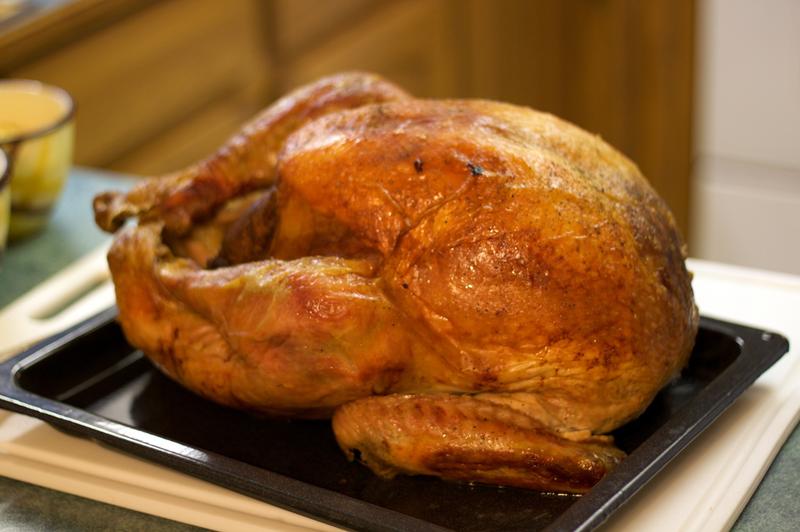
New York Times Dining section columnist Melissa Clark shared her tips on how to get organized and stay sane while planning and cooking Thanksgiving dinner this year. We've collected as many of her tips as we could type.
What You Can Do Ahead of Time
The weekend before:
- You can make pie dough, wrap it in plastic wrap and keep it in the refrigerator. The optimal day to make it is Sunday or Monday. Recipe: Melissa Clark's Basic Piecrust
- Make cranberry sauce. It keeps well in the refrigerator.
- If you’re going to use fresh pumpkin for pie (she recommends acorn or butternut squash instead of pumpkin), you can roast that now, puree it, and put it in the fridge. If you cut the squash or pumpkin up into squares to roast it, it’ll dry it out a little more, which is better. That way you can add more cream to make a richer pie.
- Order your turkey or start defrosting it if it’s frozen.
A few days before:
- Dry brine is an easier alternative to a wet brine: Rub salt and pepper in the turkey’s cavity and all over the outside a few days before Thanksgiving, wrap it up and put it in the fridge.
- Stuffing: You can toast the bread, sautee the aromatics (onions, garlic, herbs), peel and roast the chestnuts days ahead of time, but keep all those things separate and bring them together at the last minute, before you put the stuffing in the oven on Thursday.
The day before:
- Bake your pies on Wednesday night.
- To get a headstart on gravy, get turkey pieces and bones and brown them to make a stock to use for the gravy you make on Thursday.
Thanksgiving Day:
- Cook your turkey.
- Make your mashed potatoes.
- Assemble and cook the stuffing.
- Enjoy Thanksgiving!
Other cooking tips:
- You do not have to wash your turkey. Any bacteria will be killed off while it roasts in the oven. If you do want to wash your turkey, just make sure you clean up your sink area really well afterward (it’s the splashing water that spreads bacteria around the kitchen when a chicken or turkey is washed)—use soap and hot water to clean up anything the raw turkey or splashes from the turkey.
- The less you do to the turkey, the better. Don’t baste it, don’t truss it, don’t stuff it. Just salt and pepper it a few hours (or days) before you put it in the oven, and let it be. (Roast it at 450 for 30 minutes. Cover the breast with aluminum foil and turn down the oven to 350 degrees. Roast it until the thigh meat reaches 165 degrees, then it’s done).
- If you are cooking for a crowd, instead of getting one huge turkey, get two smaller birds. And make sure you can fit two roasting pans with two turkeys in your oven.
- If your turkey comes with a plastic pop-up thermometer, pull it out and throw it away. Use your own meat thermometer to take the temperature and know when it’s done. And where do you stick that thermometer? Try several spots in the thigh and go with the lowest temperature. When it gets to 165 degrees, it’s done. Make sure you don’t hit a bone with the thermometer but that it’s deep into the meat.
- To cook a turkey faster or to cook it on a grill, you can spatchcock it. Have the butcher take out the backbone and butterfly the turkey. It’s easier to maneuver this way if you want to grill it (make sure you grill it over indirect heat and keep the temperature low)
- To make gluten-free gravy: stir a little butter and squash puree into the turkey drippings and cook it down. You can also use cornstarch to thicken gravy instead of flour—cornstarch is gluten-free.
